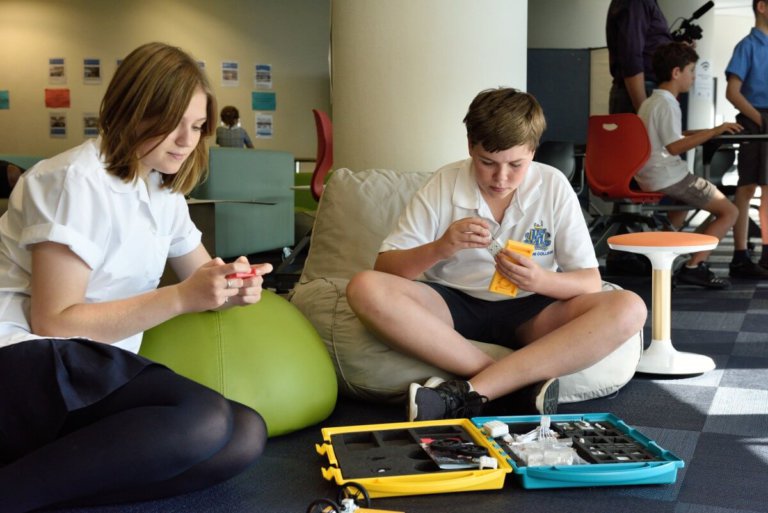
Looking back to the International Day of Women and Girls in Science held by the United Nations (UN) this year, a few jaw-dropping statistics about the gender gap in STEM were addressed.
For instance, “According to UNESCO data (2014 – 2016), only around 30 per cent of all female students selects STEM-related fields in higher education. Globally, female students’ enrolment is particularly low in ICT (3 per cent), natural science, mathematics and statistics (5 per cent) and in engineering, manufacturing and construction (8 per cent).”
And at present, less than 30 percent of researchers worldwide are women.
Knowing this, many schools around the world have made it their mission to glue together the gender gap with engaging STEM activities, as well as by celebrating the accomplishments of both male and female scientist, technologists, engineers and mathematicians, hoping that continuous encouragement of learners’ STEM interests will lead to a positive shift in the statistics above.
Oakland’s STEM lab is in full swing. Today students were making predictions about mixing colors… #SumterStrong #EducatingtheWholeChild pic.twitter.com/Wce6620CFs
— Oakland Primary School (@OPS352) August 29, 2019
Asking why there are so few female mathematicians, the Foundation for Economic Education (FEE) adds to the gender gap debate:
“Nonetheless, it remains a fact that even after decades of special programmes to get women more involved in STEM fields, females are still under-represented in science, technology, engineering, and especially high-level mathematics.
“We find that in the UK, fewer than 20 per cent of female students are pursuing engineering or computer science, and fewer than 40 per cent are doing mathematics,” FEE explains.
However, a new report published in Nature Communications harvests hope and a bright future for female STEM learners.
Conducted by two researchers Pau Balart, from the University of Illes Balears and Matthijs Oosterveen from the Erasmus University Rotterdam, this new analysis exudes results that could be gender gap game-changers.
“Females tend to perform worse than males on math and science tests, but they perform better on verbal reading tests. Here, by analysing performance during a cognitive test, we provide evidence that females are better able to sustain their performance during a test across all of these topics, including math and science,” Balart and Oosterveen state.

The report reveals interesting information that could seal together the gender gap at schools. Source: STEM t41/Unsplash
Performance pressure
Throughout their analysis, the two researchers found that student performance can be significantly affected by test-taking and that longer cognitive tests decrease the gender gap in math and science.
“We documented that females are better able to sustain their performance during the cognitive task of completing a test. This result is present worldwide, robust to numerous checks, and sizable in terms of the highly studied gender gaps in test scores. In particular, for more than 20% of the countries where male students had an initial advantage in math and science, this gap was completely offset or even reversed after two hours of test-taking,” they note.
Offering a counterbalance to gender stereotypes in STEM-based subjects, the researchers suggest a change in test styles and hope that educators understand that cognitive tests do not only measure how smart someone is, but that they also measure non-cognitive skills, such as perseverance.
Opposing outdated ideals of ‘girls being better at creative subjects’ and ‘boys being better at STEM-related subjects’, the report adds new angles to the gender gap spectrum and states that girls are just as good at STEM.
Studies show that girls are just as good at STEM subjects as boys. So why so few female scientists then? asks Emma Johnston | @abcnews #QandA https://t.co/uPy1jplMSH
— ABC Q&A (@QandA) June 13, 2019
Digging out the stereotype from the root up seems like a great way to go, and as these two researchers have made a stand for gender equality in STEM with their informative study on school students, a change may be spurred in the early years of education.
Eradicating any barriers that keep young female learners from pursuing their interests in science, tech, engineering or maths is an advisable duty for all schools to carry out.
And with these recent revelations, perhaps it’s time to rejuvenate the test-taking structures in schools and seek assessment strategies that suit every child’s needs.
Liked this? Then you’ll love…
Shifting the tide: Should schools go gender-neutral?
College-educated women finally reach gender equality in the US workforce







